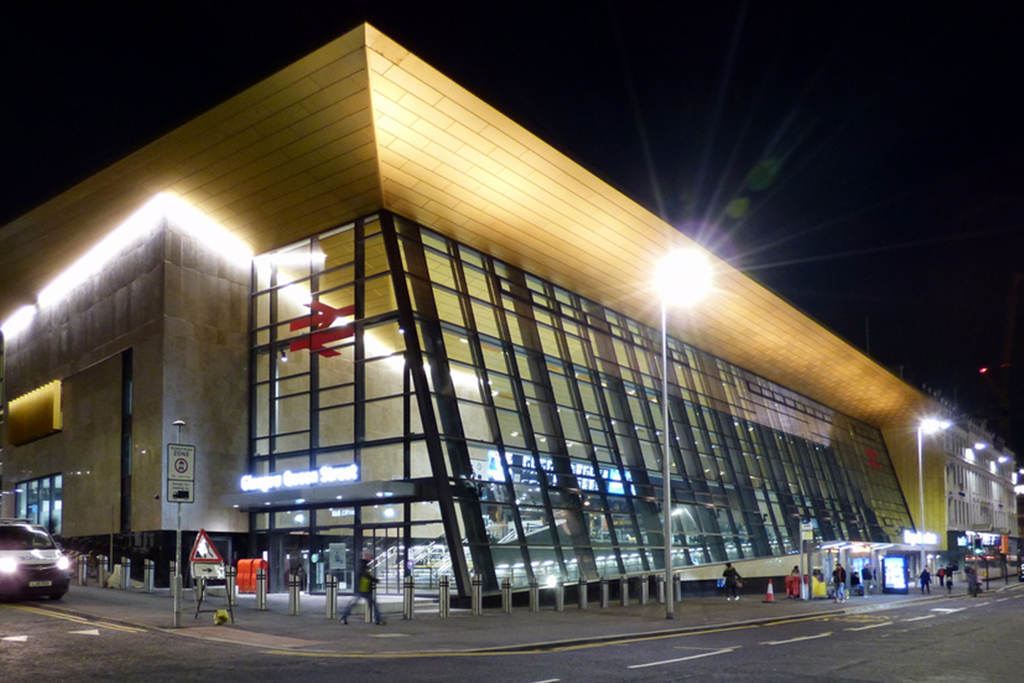The much-anticipated Queen Street Station development marks an exciting milestone in the ongoing transformation of urban infrastructure in the UK. This large-scale project is not only about improving the rail network; it also influences how people, businesses, and logistics companies operate in the heart of the city. For commuters, this means better connectivity. For local businesses, it means easier access to customers. And for service providers, it means adapting to a shifting transport landscape.

What is the Queen Street Station Development?
The project is a significant upgrade of Glasgow’s Queen Street Station, one of Scotland’s busiest transport hubs. With millions of passengers passing through annually, the development focuses on modernising facilities, expanding platforms, and improving passenger experience. According to Network Rail, the aim is to futureproof the station for decades to come, ensuring smoother operations and increased capacity for both commuters and long-distance travellers.
This development is not just about transport convenience; it is also about supporting local economies. Improved infrastructure attracts new investment, encourages tourism, and creates opportunities for businesses across multiple sectors.
The Impact on Local Businesses
Large-scale transport developments inevitably influence surrounding areas. The Queen Street Station development will open doors for greater commercial activity, encouraging businesses to set up in and around the city centre. Retailers, hospitality providers, and logistics firms alike stand to benefit from the improved accessibility.
For example, house removal companies and office relocation services often depend on efficient transport routes. When congestion is reduced and connectivity is enhanced, these services can operate more smoothly, delivering quicker and more reliable outcomes for clients.
Logistics Lessons from Infrastructure Projects
From a logistics perspective, the Queen Street Station development highlights the importance of planning and adaptability. Major infrastructure projects often require companies to rethink their strategies. For instance:
- Moving Van London firms may adjust their schedules to account for new traffic patterns around redeveloped areas.
- Furniture delivery services may benefit from better accessibility to central locations, reducing delivery times.
- Packers and movers can streamline operations with more predictable routes and clearer access points.
In many ways, infrastructure projects like this remind us that logistics is not just about vehicles and manpower but also about aligning with the city’s evolving landscape.
The Role of Removal Services in a Changing City
As cities grow and evolve, the demand for relocation and removal services rises. People move homes for work, lifestyle, or education, while businesses relocate to capitalise on new opportunities. A trusted house removal company ensures these transitions are stress-free. Meanwhile, office relocation services help businesses maintain continuity when moving to new premises near improved transport hubs.
Additionally, the need for packaging materials and professional handling has never been greater. Whether it’s ensuring the safe delivery of furniture or managing clearance projects in busy city centres, reliable London removals companies must rise to the challenge.
Queen Street Station Development: Opportunities for Logistics Providers
1. Better Accessibility
The redevelopment will make Queen Street Station more accessible, which indirectly supports logistics companies working in and around central areas. Improved access means quicker service delivery for clearance projects and removals.
2. Increased Demand for Services
As new businesses and residents are attracted to the area, demand for removal and delivery services is likely to rise. This creates opportunities for removal companies to expand their client base.
3. Sustainability Focus
Infrastructure projects increasingly prioritise sustainability. Logistics companies that align with this ethos, by using eco-friendly packaging materials or fuel-efficient vans, can position themselves as leaders in the London removals industry.
How Movevan-Type Services Adapt to Change
Adaptability is key for logistics companies during major infrastructure projects. Successful service providers will:
- Stay updated on new traffic flows and road closures around developments.
- Invest in modern fleets to ensure reliability and efficiency.
- Offer comprehensive services that include packing, clearance, and delivery.
This adaptability ensures that whether it’s a family moving into a new home or a business undergoing relocation, customers experience minimal disruption.
External Influences on Logistics
The Queen Street Station development is part of a wider trend of urban regeneration across the UK. Other examples, such as the Crossrail project in London, show how improved connectivity can transform commuting and logistics alike. For removal companies, this means opportunities to tap into growing demand while refining operations to remain competitive.
Planning for the Future
The Queen Street Station development is not just about trains, it represents how cities prepare for the future. For logistics and removals businesses, the project offers both challenges and opportunities. The key takeaway is clear: planning, adaptability, and customer-centric service are what will keep businesses thriving in changing landscapes.
As infrastructure evolves, so too must the services that support the daily lives of residents and businesses. Just as Network Rail carefully plans for future demand, London removals companies must be prepared to meet the needs of a dynamic city.
Credits: uk.finance.yahoo.com
Leave a Reply